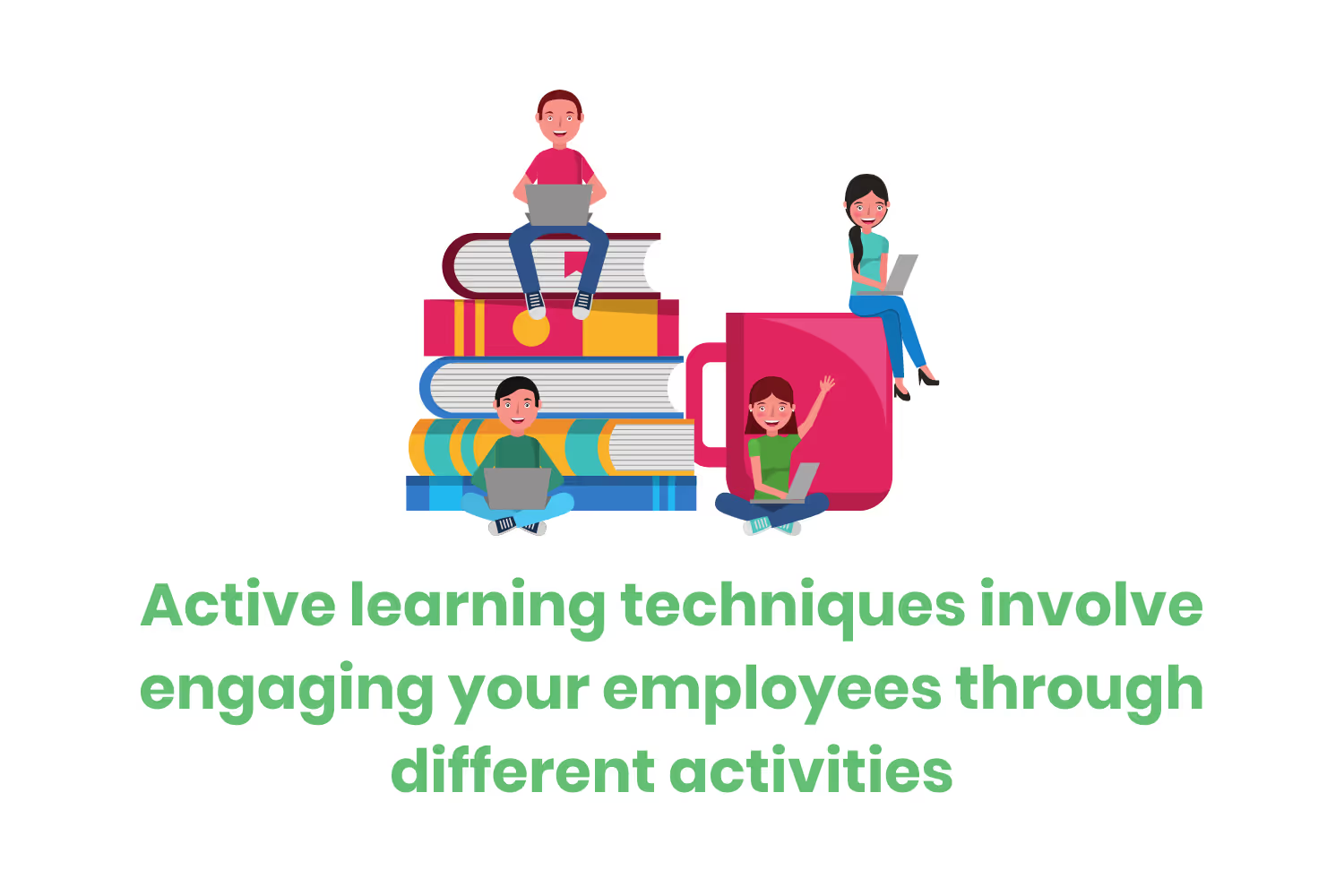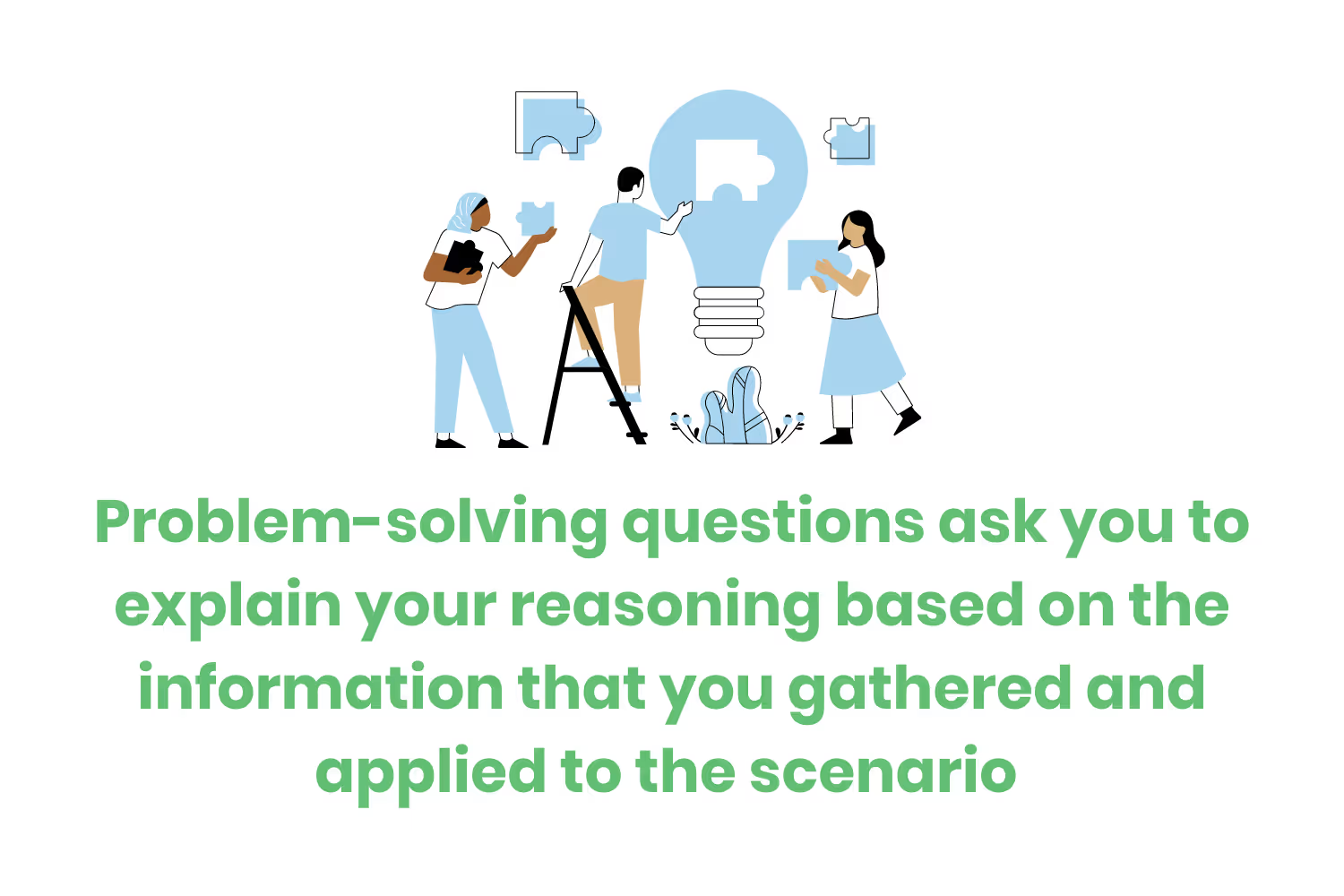15 Sample Questions for Your Business’s Cultural Awareness Quizzes
To put it simply, your employees need to apply the information they learn to truly comprehend it. So how do you ensure that they are learning this material? The easiest way is to incorporate cultural awareness quizzes into your training programs.

When interacting with individuals from other cultures, backgrounds, and environments, people need to be aware that there are different interpretations of words and actions. Understanding what these differences are is so important in both our personal lives and in the workplace.
First of all, walking into a cultural blunder is humiliating. Someone from a different background as you could perceive your actions or words as rude when you meant to be polite. Hopefully, you’ve never experienced this. But if you have, you know how awkward this can feel. It makes for an uncomfortable situation that could be difficult to get out of. After all, you don’t want your words to come across as verbal harassment.
But feeling humiliated isn’t the only result of a lack of cultural awareness. If it happens in the workplace, your business can also end up suffering. For instance, offending a potential supplier, corporate partner, or customer could result in losing a business deal. You’d hate to miss out on these opportunities because of a misunderstanding that you could’ve prevented.
Over time, mistakes like these can ruin your organization’s reputation. Representing an organization but not having cultural awareness can cause backlash for years to come. You may have heard the term “cancel culture” before. This also gets referred to as “call-out culture.” Essentially, this term refers to when people reject or stop supporting another person or organization for something they said or did.

Often, society views these offensive behaviors as an act against diversity. That isn’t necessarily the case and usually is a result of a misunderstanding or something taken out of context. But regardless, it was enough to offend people to completely reject (or “cancel”) the person or company at fault.
Again, this causes serious impacts for your business if people stop supporting you for something that you or an employee did due to a lack of cultural awareness.
There are plenty of reasons why it’s important to educate and train on this topic in the workplace. Companies that promote respect for each other have a better community and fewer instances of harassment.
But training isn’t enough. You need to confirm that your employees are retaining the information you provide. They aren’t likely to pay attention to a poorly designed PowerPoint presentation. If they don’t learn anything in their training, they’re more likely to cause one of these mistakes.
This is why you need to apply active learning techniques. These methods involve engaging employees through activities such as…
- Problem-solving
- Case studies
- Role-playing
- Discussions

To put it simply, your employees need to apply the information they learn to truly comprehend it. So how do you ensure that they are learning this material? The easiest way is to incorporate cultural awareness quizzes into your training programs.
Problem-Solving Cultural Awarenss Questions
Do problem-solving questions remind you of when you were in grade school? I’m sure we all had teachers that assigned hundreds of these types of problems. It seemed like they took us several hours to solve every week.
Teachers liked to use these kinds of questions because they are effective. They help us learn how to gather data from a paragraph of information so that we can…
- Brainstorm solutions
- Apply our ideas to the situation
- Analyze the potential results
- Reach a logical conclusion
These problem-solving questions would also get referred to as extended response problems. They often require you to explain your reasoning based on the information that you gathered and applied to the scenario. Doing this demonstrates that you understand why the question has a particular answer.

Cultural awareness training focuses on scenarios to help make employees aware of their actions, words, and body language when interacting with people of different backgrounds. Because training is often situational, you need to include these problem-solving questions. Your team will likely answer them better since they require critical thinking.
Coming up with these questions on your own can be a challenge. To help get you started, here are some example styles to consider.
- You find yourself on a business trip in Germany to help nurture a relationship with a corporate partner. One day you are out having dinner with a few of the top executives at the company. You pick up your fork with your right hand. Some of the executives give you dirty looks. List four meal etiquette details regarding cutlery in German society. Explain how they are different compared to American dining etiquette.
- You visit your Japanese supplier and you meet their new product manager. The interpreter introduces the two of you. You go to shake the manager’s hand but they hesitate, looking confused. Why would someone from Japan not shake your hand? What should you have done instead?
- You are emailing the marketing manager located in the corporation’s Swiss business unit. Should you get straight to the point in your email, or should you add pleasantries before you get to your business-related questions? Explain your answer.
- You work in the oil and gas industry and you are creating a partnership located in the Middle East. As a woman, you ask your boss if there are any cultural idiosyncrasies you should be aware of when interacting with employees of the other company. Your boss tells you to remember not to shake anyone’s hand from the other organization. Why would your boss tell you this?
- You meet with a supplier in Mexico. Before you get the chance to visit their corporate office, you receive an invitation to dinner with some of the supplier’s executives. At this dinner, should you discuss business, deals, contracts, and other professional matters? Why or why not?
Notice how none of these questions have answers that someone would know without some background information. This is why your cultural awareness training needs to be thorough. Now, I don’t mean you need to go over every country’s dining etiquette to properly run your business.
But if your company works with or employs people of a specific culture, it’s helpful to learn about and train on the backgrounds of those individuals. Take the first question, for example. If your staff will be traveling to Germany for business trips, they need to learn about those cultural preferences before they go.
Case Study Cultural Awareness Questions
Some key differences set effective teachers apart from ineffective ones.
For instance, an ineffective teacher may primarily educate by reading straight out of the textbook or directly from their presentations. This is ineffective for several reasons. First of all, only 26% of the population are auditory learners. Also, reading this information verbatim makes it seem like the teacher doesn't know the material themselves.
But effective lessons engage everyone in the classroom by using different teaching styles. They also use questions to guide students in formulating better answers and help them come up with their own questions.

Since everyone has different learning styles, it’s important to use a variety of methods to boost engagement. This applies to your training programs for cultural awareness. For example, only using the problem-solving questions I discussed earlier might not be effective for your entire team.
To change things up, adding real-world examples and case studies can also help people understand the materials better. Therefore, you should incorporate this style of question into your cultural awareness quizzes.
- In 2008, President Bush had shoes thrown at his head while in Baghdad for a news conference. A television network employee chucked his shoes while screaming, “This is a farewell kiss from the Iraqi people, you dog!” The journalist later reported that he wanted to express his rejection of Bush’s words and political goals in Iraq. Why might the Iraqi employee choose to throw shoes at the President? What do shoes represent in the Middle East?
- L’Oreal had to adapt its company culture when it expanded to Latin America. In France, they openly disagree and debate with coworkers as a means to create new ideas, generate creativity, and strive for excellence. Why would a Latin American employee interpret the same behavior as offensive and rude?
- In the 1990s, NASA launched a mission to Mars. The Orbiter would deploy a Martian Polar Lander on the surface of the planet to collect measurements. The team that created the Orbiter used the metric system to build the machine. The Lander team used the imperial system. The measurement problems caused NASA to lose contact with the machine. How could other companies avoid a similar misunderstanding due to different measurement units?
- The Dutch shipping company TNT was task-oriented and had a flat organizational structure. This was true until it expanded into the Chinese markets. How are Chinese businesses organized compared to TNT? Are they also task-oriented?
- During the Korean War, a British unit overlooking an important river had a miscommunication with American superiors. The commander reported to his superior that “Things are a bit sticky, sir.” The term “sticky” actually meant “desperate. So what he really meant was, “Things are desperate, sir.” The Americans thought this meant the situation was difficult but manageable since that is how they interpret the phrase “sticky situation.” But really, the situation was urgent and fatal (hence desperate). What could be the potential consequences of this miscommunication?
Role-Play Cultural Awareness Questions
Role-playing is another way to gear your cultural awareness lessons to those who learn in different ways. This learning model is when two or more people act out specific roles to learn what to do in challenging situations. It also helps people learn ambiguous concepts and theories.
These acting scenes are usually modeled after real-life scenarios so that employees can get as close to “the real thing” as possible. More specifically, role-playing helps learners…
- Understand the classroom theory in action
- Understand how complex decisions can be
- Reflect on situations as they occur in real-time
- Apply knowledge to a given problem as it arises
Harvard University discusses the effectiveness of this educational tool and how it improves learning. Besides just increasing engagement, role-playing was also found to boost retention. Because of this, it’s important to include these so that your employees remember how to maintain cultural awareness.

So what kind of role-playing can you offer? Let’s go over some examples for inspiration. You can have employees act out these scenarios, then pose the questions after.
- You are in a simulation of an international conference. You find yourself in a conversation with a Japanese attendee. At some point in the conversation, the attendee asks you your age. Is asking someone’s age when meeting for the first time considered rude in Japan? Should you ask the attendee their age in return?
- You find yourself in a situation where you offended a customer in Turkey. You used a gesture that, in your culture, means “okay” or “sounds good”. What does this type of gesture mean in Turkey? Should you make hand gestures when traveling?
- You are an independent contractor working for a company in China. You are about to meet the CEO and his son for the first time, so you think to bring a gift. But the individuals get offended by the gift you chose to bring. What are some examples of items you should never use as gifts in China? Could the Chinese view this as causing a hostile work environment?
- In a meeting with a representative from South Korea, you give them your business card. The look on their face shows that you made a mistake by how you presented it. Should you give it to them with one hand? Both hands? Or should you slide it next to their papers?
- You are having a business dinner in Chile. You come across some food that you would normally use your fingers to eat if you were at home. How should you eat this food to avoid being rude in the eyes of the Chileans?
Conclusion
Cultural misunderstandings are humiliating for those involved. Offending someone with your words and actions due to ignorance can even lead to setbacks for businesses. The behavior could cause people to stop supporting you or your business.
But no one wants these negative outcomes, especially over something avoidable. To prevent it from happening, it’s best to provide training over cultural differences. Employees would then be aware of how to interact with individuals of different backgrounds.
Making these training programs engaging is necessary so that employees retain the information. Quizzes are the best way to ensure that they grasp the concepts discussed. But they don’t need to be as bland as yes or no questions.
Using these various question formats will cater to people that have different learning styles. That way, they can better understand the training to boost their cultural awareness.
Emphasize your product's unique features or benefits to differentiate it from competitors
In nec dictum adipiscing pharetra enim etiam scelerisque dolor purus ipsum egestas cursus vulputate arcu egestas ut eu sed mollis consectetur mattis pharetra curabitur et maecenas in mattis fames consectetur ipsum quis risus mauris aliquam ornare nisl purus at ipsum nulla accumsan consectetur vestibulum suspendisse aliquam condimentum scelerisque lacinia pellentesque vestibulum condimentum turpis ligula pharetra dictum sapien facilisis sapien at sagittis et cursus congue.
- Pharetra curabitur et maecenas in mattis fames consectetur ipsum quis risus.
- Justo urna nisi auctor consequat consectetur dolor lectus blandit.
- Eget egestas volutpat lacinia vestibulum vitae mattis hendrerit.
- Ornare elit odio tellus orci bibendum dictum id sem congue enim amet diam.
Incorporate statistics or specific numbers to highlight the effectiveness or popularity of your offering
Convallis pellentesque ullamcorper sapien sed tristique fermentum proin amet quam tincidunt feugiat vitae neque quisque odio ut pellentesque ac mauris eget lectus. Pretium arcu turpis lacus sapien sit at eu sapien duis magna nunc nibh nam non ut nibh ultrices ultrices elementum egestas enim nisl sed cursus pellentesque sit dignissim enim euismod sit et convallis sed pelis viverra quam at nisl sit pharetra enim nisl nec vestibulum posuere in volutpat sed blandit neque risus.

Use time-sensitive language to encourage immediate action, such as "Limited Time Offer
Feugiat vitae neque quisque odio ut pellentesque ac mauris eget lectus. Pretium arcu turpis lacus sapien sit at eu sapien duis magna nunc nibh nam non ut nibh ultrices ultrices elementum egestas enim nisl sed cursus pellentesque sit dignissim enim euismod sit et convallis sed pelis viverra quam at nisl sit pharetra enim nisl nec vestibulum posuere in volutpat sed blandit neque risus.
- Pharetra curabitur et maecenas in mattis fames consectetur ipsum quis risus.
- Justo urna nisi auctor consequat consectetur dolor lectus blandit.
- Eget egestas volutpat lacinia vestibulum vitae mattis hendrerit.
- Ornare elit odio tellus orci bibendum dictum id sem congue enim amet diam.
Address customer pain points directly by showing how your product solves their problems
Feugiat vitae neque quisque odio ut pellentesque ac mauris eget lectus. Pretium arcu turpis lacus sapien sit at eu sapien duis magna nunc nibh nam non ut nibh ultrices ultrices elementum egestas enim nisl sed cursus pellentesque sit dignissim enim euismod sit et convallis sed pelis viverra quam at nisl sit pharetra enim nisl nec vestibulum posuere in volutpat sed blandit neque risus.
Vel etiam vel amet aenean eget in habitasse nunc duis tellus sem turpis risus aliquam ac volutpat tellus eu faucibus ullamcorper.
Tailor titles to your ideal customer segment using phrases like "Designed for Busy Professionals
Sed pretium id nibh id sit felis vitae volutpat volutpat adipiscing at sodales neque lectus mi phasellus commodo at elit suspendisse ornare faucibus lectus purus viverra in nec aliquet commodo et sed sed nisi tempor mi pellentesque arcu viverra pretium duis enim vulputate dignissim etiam ultrices vitae neque urna proin nibh diam turpis augue lacus.




